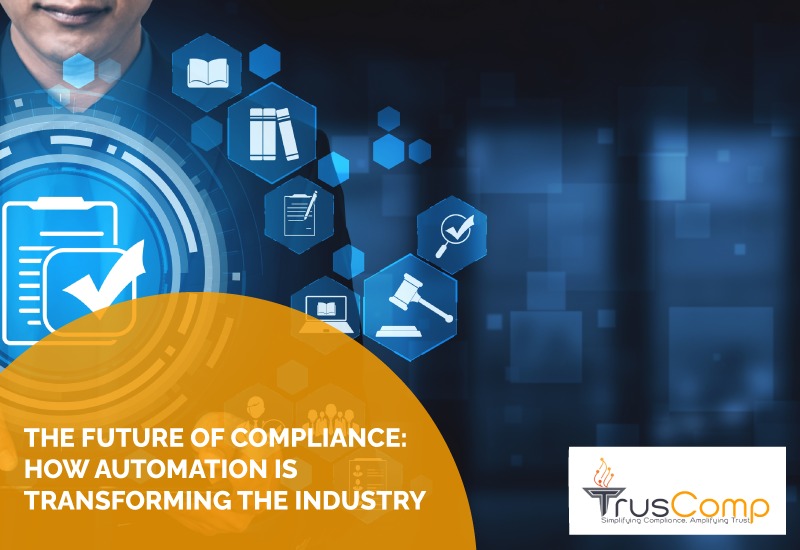The landscape of compliance is undergoing a significant transformation, driven by advancements in automation technologies. From “labor law compliance” to “vendor audit best practices,” automation is revolutionizing how businesses manage compliance, reducing errors, and streamlining processes.
This “labor law compliance blog” explores how technologies like Robotic Process Automation (RPA) and Artificial Intelligence (AI) are shaping the future of compliance.
Introduction
Compliance management has always been a critical aspect of business operations, ensuring adherence to regulations and minimizing risks. However, traditional compliance processes are often manual, time-consuming, and prone to errors.
The advent of automation technologies is changing this dynamic, offering new ways to enhance efficiency and accuracy in compliance management.
The Role of Automation in Compliance – Future of Compliance
1. Robotic Process Automation (RPA)
RPA involves the use of software robots to automate repetitive tasks. In compliance management, RPA can handle tasks such as data entry, document processing, and report generation. This reduces the burden on human employees and minimizes the risk of errors.
2. Artificial Intelligence (AI)
AI technologies, including machine learning and natural language processing, can analyze large volumes of data to identify patterns and anomalies. In compliance, AI can be used for risk assessment, fraud detection, and regulatory monitoring.
AI-powered tools can provide real-time insights and predictive analytics, helping businesses stay ahead of compliance issues.
Benefits of Compliance Automation
1. Error Reduction
Manual compliance processes are susceptible to human errors, which can lead to costly penalties and legal issues.
Automation reduces the likelihood of errors by ensuring consistent and accurate execution of tasks. For example, automated payroll systems can accurately calculate wages and deductions, ensuring compliance with labor laws.
2. Efficiency and Productivity
Automation streamlines compliance processes, allowing businesses to handle large volumes of data quickly and efficiently. This frees up employees to focus on more strategic tasks, improving overall productivity.
Automated tools can also provide real-time monitoring and reporting, enabling businesses to respond promptly to compliance issues.
3. Cost Savings
By reducing manual labor and minimizing errors, automation can lead to significant cost savings. Businesses can avoid fines and penalties associated with non-compliance, and the efficiency gains from automation can result in lower operational costs.
For example, using automated tools for “UAN generation technology” can streamline the process and reduce administrative costs.
4. Real-Time Monitoring
Automated compliance tools offer real-time monitoring and reporting capabilities. This allows businesses to track compliance status continuously and identify potential issues before they escalate. Real-time insights enable proactive compliance management, reducing the risk of regulatory breaches.
Applications of Automation in Compliance

1. Labor Law Compliance
Automation can simplify labor law compliance by ensuring accurate recordkeeping, timely wage payments, and adherence to regulations. Automated payroll systems can handle complex calculations and generate compliance reports, reducing the administrative burden on HR teams.
2. Vendor Audits
Conducting vendor audits is essential for maintaining regulatory compliance and mitigating risks in the supply chain. Automation can streamline the audit process by automating data collection, analysis, and reporting.
This ensures thorough and consistent audits, helping businesses identify and address compliance issues with vendors.
3. Payroll Compliance
Accurate payroll compliance is crucial for avoiding penalties and building trust with employees. Automated payroll systems can ensure timely and accurate wage payments, tax deductions, and recordkeeping.
These systems can also generate compliance reports and alerts, helping businesses stay compliant with payroll regulations.
4. UAN and IP Generation
Generating Universal Account Numbers (UAN) and Insurance Policy (IP) numbers can be a complex and time-consuming process.
Automation tools like TrusComp’s SS Bot can simplify this process by automating data entry and validation. This ensures accuracy and efficiency, reducing the risk of errors and compliance issues.
Compliance Automation Insights
1. Integration with Existing Systems
For successful implementation, automation tools should integrate seamlessly with existing systems and processes. This ensures a smooth transition and maximizes the benefits of automation. Businesses should choose automation solutions that are compatible with their current infrastructure.
2. Continuous Improvement
Compliance automation is not a one-time effort but an ongoing process. Businesses should continuously monitor and evaluate their automation tools to identify areas for improvement.
Regular updates and enhancements can help keep the automation systems aligned with changing regulations and business needs.
3. Employee Training
While automation reduces the manual workload, employees still play a crucial role in compliance management. Training employees on how to use automation tools effectively is essential for maximizing their benefits.
This includes understanding the capabilities of the tools and knowing how to interpret and act on the insights they provide.
4. Data Security
Automation involves handling large volumes of sensitive data, making data security a top priority. Businesses should implement robust security measures to protect data from breaches and ensure compliance with data protection regulations. This includes encryption, access controls, and regular security audits.
Conclusion
The future of compliance is being shaped by automation technologies that offer significant benefits in terms of efficiency, accuracy, and cost savings. From “labor law compliance” to “vendor audit best practices,” automation is transforming how businesses manage compliance.
By embracing automation and leveraging “compliance automation insights,” businesses can navigate the complexities of compliance more effectively and stay ahead of regulatory changes.
As automation continues to evolve, it will play an increasingly vital role in compliance management, helping businesses achieve greater compliance accuracy and operational efficiency.
The key to success lies in choosing the right automation tools, integrating them with existing systems, and continuously improving and adapting to the changing regulatory landscape.



